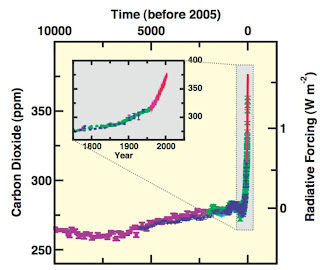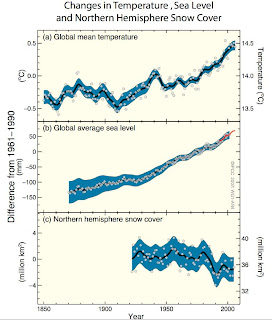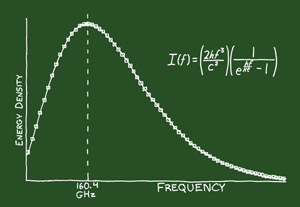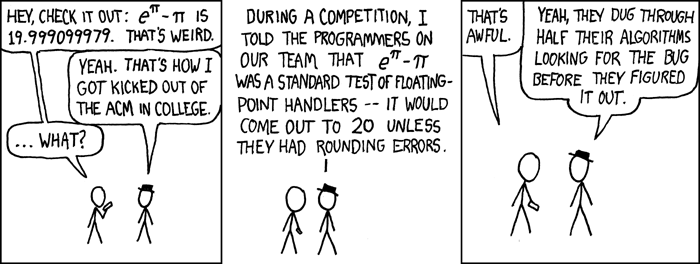Now that I've ranted about how cold it is, I'm going to rant about how warm it is. Whereby "rant," I mean something much much more than that, but you'll see.
On Monday we discussed in Coffee the recent IPCC (Intergovernmental Panel on Climate Change) report to policy makers. You can see the full thing here (in pdf form); all of the figures I'm showing are snatched directly from there.
The report is entitled "Climate Change 2007: The Physical Science Basis," and it essentially describes the unambiguous evidence that Earth's climate is going through rapid transitions, and this warming is unambiguously due to human action. The report also outlines several climate change models, and describes how even the most conservative and optimistic models predict drastic and nearly irreversible changes. What is even more terrifying is that, scientifically, their approach to the the entire thing is incredibly conservative and almost certainly underestimates the problems. For example, the report completely ignores "catastrophes," rapid events that could strongly alter sea levels and atmospheric content (like the Arctic ice cap melting, or all of the frozen peat in Siberia undergoing a phase transition [i.e., melting] and releasing a bunch of methane into the air all at once). They ignore possible catastrophes because, frankly, they can't be well modeled yet, and things that can't be well modeled have no business being in models.
 The graph on the left shows the increase in carbon dioxide (CO2 10,000 years; the inset shows a blow-up of the last two hundred years. Clearly, something happened that made this trend go from slowly increasing to increasing really-really-fast. The report has similar graphs, showing disturbingly similar trends, for both methane and nitrous oxide. On the right-hand side of these graphs you can see the ") in the air in the lastradiative forcing" due to each of these gases. Basically, a certain amount of gas in the air can cause the atmosphere to either warm up or cool down. (The warming up is what is commonly referred to as the "greenhouse effect.") What I find painfully ironic about relative radiative forcing amounts is that apparently it wasn't until around the 1950s that people actually started noticing the increase in temperature of Earth's atmosphere due to gases like CO2. This is because the Earth's temperature wasn't actually increasing all that much until
The graph on the left shows the increase in carbon dioxide (CO2 10,000 years; the inset shows a blow-up of the last two hundred years. Clearly, something happened that made this trend go from slowly increasing to increasing really-really-fast. The report has similar graphs, showing disturbingly similar trends, for both methane and nitrous oxide. On the right-hand side of these graphs you can see the ") in the air in the lastradiative forcing" due to each of these gases. Basically, a certain amount of gas in the air can cause the atmosphere to either warm up or cool down. (The warming up is what is commonly referred to as the "greenhouse effect.") What I find painfully ironic about relative radiative forcing amounts is that apparently it wasn't until around the 1950s that people actually started noticing the increase in temperature of Earth's atmosphere due to gases like CO2. This is because the Earth's temperature wasn't actually increasing all that much until the 1950s. Why not? There were certainly pollutants in the air from cars and factories pre-1950. The reason is because the ickier pollutants—think nasty particulate smoke from Industrial Revolution era factories—acted as a coolant, effectively counterbalancing the warming effect from the other gases. Once people realized that "smog is bad" and started cleaning up cities, the greenhouse gases were able to start really doing their thing. On the right is a series of plots showing this increase in temperature and its affect on the average sea level and the amount of snow in the northern hemisphere (between March and April) since 1850 or so. The smooth black curves represent averages for a given decade, while the grey dots are actual yearly values. Note, especially for the snow and temperature plots, that just because the amount of snow is up or the temperature is down in Columbus, OH for a given week, month, or year does not mean that the average global temperature is decreasing.
the 1950s. Why not? There were certainly pollutants in the air from cars and factories pre-1950. The reason is because the ickier pollutants—think nasty particulate smoke from Industrial Revolution era factories—acted as a coolant, effectively counterbalancing the warming effect from the other gases. Once people realized that "smog is bad" and started cleaning up cities, the greenhouse gases were able to start really doing their thing. On the right is a series of plots showing this increase in temperature and its affect on the average sea level and the amount of snow in the northern hemisphere (between March and April) since 1850 or so. The smooth black curves represent averages for a given decade, while the grey dots are actual yearly values. Note, especially for the snow and temperature plots, that just because the amount of snow is up or the temperature is down in Columbus, OH for a given week, month, or year does not mean that the average global temperature is decreasing.
The report then goes on to describe, and show, that these observed changes are not due to purely natural causes. "Natural" here essentially means solar activity and volcanos, whereas examples of anthropogenic (human) causes include pretty much everything that separates first world and third world countries. One of the neat things about this report is that it culls information from a variety of scientific reports; instead of the authors running their favorite model, they cite results averaged over 58 models.
 Then comes the nightmarish predictions, as summarized by the graph to the left. The plot shows global surface warming as observed over the last century (the top panel of the previous plot, remember) and as predicted for the next century. The bottommost model curve, the yellow-orange one, is if we hold the as-is atmospheric content completely constant: not another engine turning on, not another cow pooping, just—statis. And, behold, the yellow curve is increasing, and a thousand years from now the changes we have caused to the atmosphere would still be noticeable. And look: the other curves (red, green, and blue), show even higher increases in temperature. The models take things like population and economic growth into account differently, and the report says there isn't any reason to favor one over the others. It is interesting, though, that all of the models have the global population peaking around 2050. The report also gives predictions for distributions of temperature change across the globe; those of us living in the northern hemisphere should realize that the predicted average change in temperature for where we live is about twice the global average shown on the above plot.
Then comes the nightmarish predictions, as summarized by the graph to the left. The plot shows global surface warming as observed over the last century (the top panel of the previous plot, remember) and as predicted for the next century. The bottommost model curve, the yellow-orange one, is if we hold the as-is atmospheric content completely constant: not another engine turning on, not another cow pooping, just—statis. And, behold, the yellow curve is increasing, and a thousand years from now the changes we have caused to the atmosphere would still be noticeable. And look: the other curves (red, green, and blue), show even higher increases in temperature. The models take things like population and economic growth into account differently, and the report says there isn't any reason to favor one over the others. It is interesting, though, that all of the models have the global population peaking around 2050. The report also gives predictions for distributions of temperature change across the globe; those of us living in the northern hemisphere should realize that the predicted average change in temperature for where we live is about twice the global average shown on the above plot.
One of the scariest parts of these predictions is the increase in sea level. If in 2100 the average global temperature were to level out at the amount of the green line in the above plot, then the sea level would rise by about half a meter by 2300, due solely to the fact that water expands as it warms. That is, this prediction of half a meter completely neglects the fact that glaciers and ice caps will simultaneously be melting and increasing the amount of liquid water in the oceans. Think of your favorite seaside city (Boston? New York? San Francisco? Hong Kong? Singapore?), and then wonder what it will be like in a few hundred years.
So now the question is: what does humankind need to do in order to save the world and ourselves? The obvious is that if we are going to do this without simultaneously butchering the economy, then someone needs to conjure up an alternative fuel, and fast. Meanwhile, converting to soley nuclear fuel for electricity (and everything else from heat to cars being electric) would give us some time to figure all of this out without continuing to be so worsening the problem trying to solve it. But individuals on their own aren't going to make the requisite lifestyle changes; I for one know I care, but when I am cold I am going to turn my heat up. It's the classic prisoner's dilemma: it is better off for the group if no one drives big cars, but it is better for me if I drive a big car. And this is why God invented Big Government to help force people to make the right decisions, like chosing the correct lightbulb.
If I remember correctly, the IPCC will be releasing another report in April with suggestions for just what global and local changes should be made.









